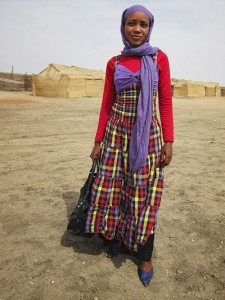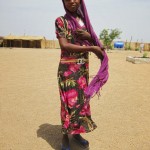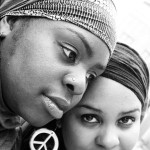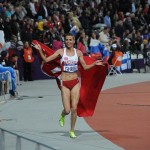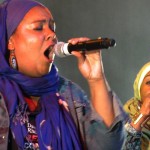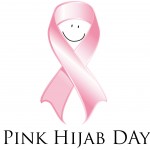Last updated on: February 14, 2013 at 1:48 am
By
Azra
Last week, several major news outlets in Minnesota reported St. Paul police officers dressed as Somali women wearing hijab (I’ve included links here from Minnesota Public Radio; the stories also received coverage in local newspapers The Star Tribune and St. Paul Pioneer Press). Pictures of the police officers were found on Twitter and initiated a strong response by local activists.
The first image reported by outlets showed an off-duty St. Paul officer wearing a hijab with a cell phone tucked under his ear. His red clothing and nametag identify him as a Target store employee (where he works when he’s off duty). A second image shows another officer wearing an orange hijab while in blackface; it was anonymously shared a mere few days later. The images were brought to attention by local activists on Twitter, and prompted a response from the St. Paul Police Department.
A group of local activists responded to the problematic images by deconstructing the racist implications of the so-called “costume.” The images were brought to attention almost entirely on Twitter, alongside a #culturenotcostume hashtag. Comments associated with the original image of the man have since been deleted. I didn’t find any additional insight to explain why the photographs were taken, or why the officers chose the costume they did, beyond that the men chose to dress in hijab as a Halloween costume.
The local activists’ tumblr post identifies why the actions are problematic, and identifies tangible next steps for the involved individuals and organizations to take to ensure such situations don’t happen again. Their explanation of why cultural clothing should never be used as costume was clearly articulated, as it reminds readers of the appropriation it constitutes:
“Wearing culturally specific and revered expressions of identity as a costume is an offensive act and an expression of white privilege. These “costumes” perpetuate racial and cultural stereotypes, reduce entire communities to a set of props and qualities, and result in cultural appropriation and misrepresentation. To suggest that such behavior “may be perceived as offensive” makes any reaction to these racist caricatures a question of sensitivity or feelings. We need to recognize that being upset about such costumes is not a reflection of a person’s hypersensitivity or lack of humor. Rather, it points to the very real power, consequences, and trauma that come with stereotypes and racism.”
The group goes on to ask the institutions involved—namely St. Paul Police and Target—reconsider their institutional attitudes towards Somalis and to strengthen ties with the community. The group reminds readers that the actions of the officers affects many other groups in addition to Somalis and could have further implications: “acts of racism also raise red flags with other communities of color and will undoubtedly fuel mistrust between law enforcement agencies and communities.”
What struck me, looking back at how the two examples were brought to attention on Twitter, was the strength and swiftness of the response both by local reporters and activists as the images were brought to light. The images were first discussed publicly on Twitter, and elicited responses from the police department directly—both on Twitter and in real life as the police chief and one of the men offered their apologies. It was fascinating to see how local, online engagement of bringing the images to attention on Twitter spilled over to its discussion in the news.
The interplay between the news stories,Twitter conversations, and response from activists raises several questions for me: Would this important dialogue been able to have taken place offline and outside the Twittersphere? How would a community response have differed (or even take place?) Without such a strong initial response entirely online, would it have received the amount of coverage it did by local media outlets?
And looking beyond how the stories were reported and the responses it elicited: Why exactly did the men choose to dress as Somali women? What was their intention behind choosing to wear a hijab? We know nothing about the commentary associated with the original images to glean if their intention was to mock Somali women, or if they had some other positive sort of intention. While the activist response was to take offense, with clearly articulated reasons for why it was offensive that elicited condolences from those responsible, would everyone consider the images or actions offensive?
The recent World Hijab Day, which asks non-Muslim women to wear hijab for a day to experience what it means to wear it (or maybe what it means to be Muslim–I haven’t quite been able to determine what purpose it serves) also came to my mind. What is it about a White man dressed in hijab that is so clearly offensive compared to non-Muslim women wearing hijab for a day? Yes, the intentions of those participating might be taken into account. But at the end of the day, will either the men or women wearing hijab really know what it’s like to be a Muslim woman? Will they understand the cultural context fundamental to one’s identity or the myriad of spiritual beliefs and understanding that accompanies someone throughout their personal religious journey?
